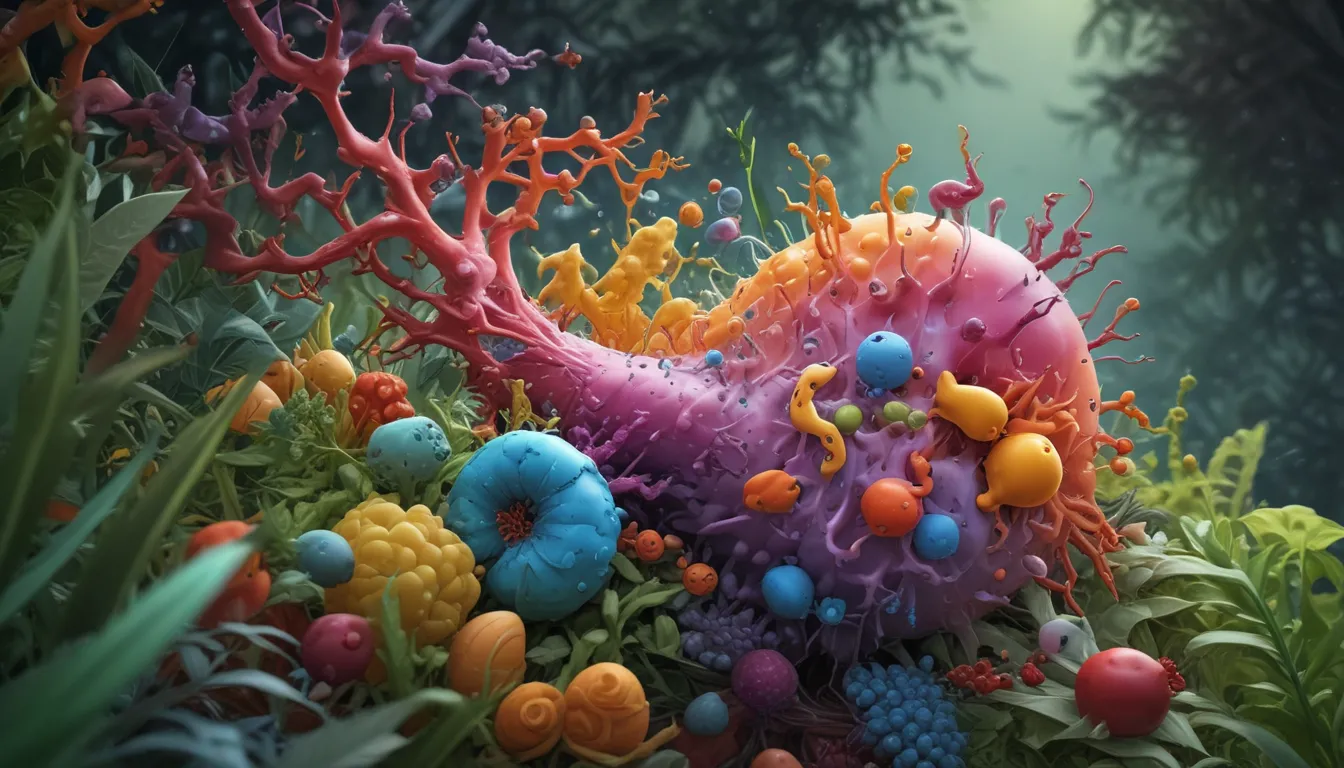A Note About Images: The images used in our articles are for illustration purposes only and may not exactly match the content. They are meant to engage readers, but the text should be relied upon for accurate information.
The induced fit model is a captivating concept in the realm of biochemistry that sheds light on how enzymes and substrates interact to catalyze essential chemical reactions in living organisms. This model elucidates the dynamic changes in the conformation of the enzyme’s active site upon binding to the substrate, culminating in a more precise fit between the two molecules. The intricate interplay between enzymes and substrates is pivotal in catalysis, ensuring the efficacy and specificity of biochemical reactions.
Exploring the Enigma of the Induced Fit Model
Let’s embark on a scientific journey into the enigmatic world of the induced fit model, unraveling 17 astounding facts that underscore its significance and impact in the domain of chemistry. From its inception to its implications in drug design, these facts will enrich our understanding of this fundamental concept in biochemistry. Join us in uncovering the hidden marvels of the induced fit model!
Understanding the Induced Fit Model
At the core of the induced fit model lies the notion that enzymes and substrates undergo conformational changes upon binding to enhance their interaction, facilitating the formation of the enzyme-substrate complex.
Delving into the Components: Enzyme and Substrate
In the induced fit model, the enzyme serves as a biological catalyst, while the substrate denotes the specific molecule(s) that the enzyme acts upon.
A Symphony of Shape Changes
Both the enzyme and the substrate exhibit dynamic alterations in their shapes upon contact, paving the way for a more snug fit and effective interaction.
Dynamic Flexibility of the Active Site
The active site of the enzyme, where the substrate binds, displays flexibility rather than rigidity, enabling it to adapt its shape for accommodating the substrate optimally.
Harmonious Shape Transformations
The induced fit model postulates that the enzyme and substrate undergo complementary shape changes to achieve optimal binding and catalytic activity.
Contrasting Lock and Key Model
In contrast to the lock and key model, wherein the enzyme and substrate possess predetermined complementary shapes for a perfect fit, the induced fit model underscores the adaptive nature of both molecules.
Unraveling Enzyme-Substrate Recognition
The induced fit model elucidates how enzymes discern specific substrates amidst complex cellular environments, effectively excluding other molecules.
Boosting Catalytic Efficiency
By bringing the enzyme and substrate into closer proximity and lowering the activation energy of the reaction, the induced fit model amplifies catalytic efficiency.
Embracing Allosteric Effects
The induced fit model intertwines with allosteric effects, where the binding of a molecule at one site on the enzyme influences its conformation and activity at another site.
Pivotal Substrate-Induced Conformational Changes
Upon binding to the enzyme, the substrate induces conformational changes that fine-tune the active site for catalysis.
Nurturing Energy Redistribution
Energy redistribution within the enzyme-substrate complex, central to the induced fit model, is imperative for the efficient conversion of substrate to product.
Fostering Specificity and Selectivity
The induced fit model plays a key role in fostering the specificity and selectivity of enzymatic reactions by ensuring the exclusive binding and conversion of compatible substrates.
Anchoring Transition State Stabilization
The induced fit model aids in stabilizing transition state intermediates, high-energy states during a reaction that pave the way for product formation.
Embracing the Multistep Binding Process
Characterized by initial weak interactions evolving into stronger and more specific interactions, the induced fit model unfolds as a multistep binding process.
Championing Conformational Flexibility
The induced fit model banks on the ability of both the enzyme and substrate to exhibit conformational flexibility, vital for enabling essential interactions.
Illuminating Relevance in Drug Design
With significant implications in drug design, the induced fit model’s comprehension of dynamic enzyme-substrate interactions is instrumental in crafting specific and efficacious drugs.
Validating Through Experimental Evidence
Experimental techniques like X-ray crystallography and nuclear magnetic resonance (NMR) spectroscopy validate the induced fit model by providing visualizations of enzyme-substrate complexes and conformational changes.
The induced fit model revolutionizes our comprehension of enzyme-substrate interactions by integrating dynamism and flexibility into the binding process, offering a more nuanced understanding of the complexities linked with enzymatic reactions. Its applications span diverse fields encompassing biochemistry, medicine, and drug design, propelling ongoing research and discoveries.
Concluding Insights
In conclusion, the induced fit model stands as a compelling concept elucidating the interactions between enzymes and substrates in chemical reactions. This model underscores the dynamic nature of enzyme-substrate interactions, underscoring the pivotal role of conformational changes in enhancing catalytic activity. By embracing the induced fit model, scientists glean insights into the intricacies of enzyme catalysis, paving the way for the design of more efficient drugs and catalysts.
FAQ
Q: What characterizes the induced fit model?
A: The induced fit model elucidates the dynamic nature of interactions between enzymes and substrates during chemical reactions, emphasizing conformational changes in both molecules to optimize their fit and enhance catalytic activity.
Q: How does the induced fit model differ from the lock and key model?
A: Unlike the lock and key model that emphasizes rigid complementary shapes for enzymes and substrates, the induced fit model underscores the flexibility of both molecules, necessitating structural changes for an optimal fit.
Q: Why is the induced fit model significant?
A: The induced fit model offers valuable insights into enzyme function and catalysis, aiding in the design of targeted drugs, enzymes, and catalysts tailored for specific reactions to bolster efficiency.
Q: Can enzymes undergo multiple conformational changes in the induced fit process?
A: Yes, enzymes can undergo multiple conformational changes during the induced fit process, involving alterations in both the active site and other regions to optimize catalytic reactions.
Q: Are all enzymes capable of undergoing induced fit interactions?
A: Most enzymes exhibit the capacity for induced fit interactions, varying in the extent of conformational changes based on the specific enzyme and substrate involved in the reaction.
Dive deeper into the realm of biochemistry by exploring how catalysis expedites chemical reactions, understanding the role of protein structure in enzyme function, or unveiling more captivating biochemistry facts.
Continuously Improving for Your Gratification
Our commitment to delivering credible and captivating content is at the core of our endeavors. Each fact shared on our platform emanates from real users like you, fostering a wealth of diverse insights and information. With our dedicated editors meticulously reviewing each submission, we ensure the highest standards of accuracy and reliability in the facts we present. Trust in our dedication to excellence and authenticity as you delve into a world of exploration and knowledge with us.






